Why Should You Visit Reykjavik, Iceland?
Beneath the spellbinding auroras that sway in the starry Icelandic sky lies a world of rugged beauty and exciting adventures. It’s as if someone plucked an entire realm of fantasy from the pages of a storybook and nestled it amidst the stark landscape of glaciers, geysers, and black sand beaches.
And at the heart of this mystical kingdom sits Reykjavik. This city is embraced by the sea, warmed by hot springs, and sprinkled with captivating street art. Reykjavik is the world’s northernmost capital, providing an epic gateway to a wealth of opportunities for exploration.
With its unworldly hot springs, towering glaciers, and enchanting northern lights, visiting Reykjavik is like stepping into a fairytale come to life. So let’s delve into this magical city and explore all the adventures it has to offer!
About the Location
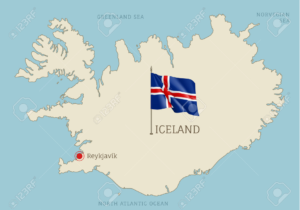
Reykjavik is the world’s northernmost capital, and despite its very extreme geographic location, it is an extraordinarily colorful city with low-rise colorful rooftops.
Reykjavik has no analogs among other European cities, mainly because it is fairly young. At the same time, a very strong imprint on its architecture and infrastructure is imposed by the national characteristics of the region.
The city is located on the northeastern tip of the island of Iceland, in the Gulf of Fahsafloui near Mount Esdzha. Because of the steam that rises from the hot springs at the foot of this mountain near the city, the first settler to settle in this area, Ingolfur Arnarson, called the valley “Smoky Bay.”
But thanks to the winds, which, using their strength, almost instantly carry away smoke and steam, the city is also the only capital in the world without smog. The light smell of hydrogen sulfide hovering over the city’s territory is a by-product of the city heating system, which has a natural character.
8 Things to Do in Reykjavik
If there’s one thing for certain, it’s that you definitely won’t be bored in Reykjavik! Here are 8 of the most popular activities and attractions to experience during your visit:
1. Visit the Northern Lights Center
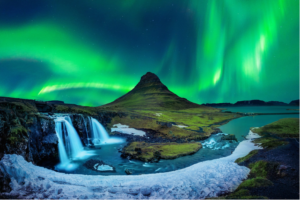
Aurora is an information center in Reykjavik where you can see what the Northern Lights look like in all their glory. The aurora borealis, or Aurora Borealis, is formed due to the collision of electrically charged particles emanating from the sun with the upper atmosphere.
In Reykjavik in winter, this phenomenon can be seen with your own eyes – the main thing is that there is a clear sky at night. In addition, good visibility requires clean air, so it is better to go to the coast, out of town, or take a boat out to sea.
Under all conditions, you will witness one of the most majestic natural phenomena when the night sky shimmers with shades of pale green, pink, yellow, and blue.
2. Take a Tour of the Lutheran Church of Hallgrimskirkja
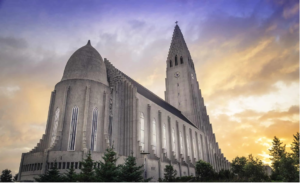
Hallgrimskirkja is a Lutheran church in the center of Reykjavik. It is not only the largest temple but also the tallest building in all of Iceland, reaching a height of 75 meters.
The building in a modernist style with a spire soaring into the sky is the main attraction of the Icelandic capital. It will be interesting to see even for people far from faith.
The church resembles a mountain peak. The architect intended the structure to look like part of the Icelandic natural landscape with mountains, rocks, and glaciers. And they made it so high because the church’s fathers wanted it to be higher than the Catholic cathedral of the city. The construction of this unique building began in 1945 and was completed only 41 years later.
3. Visit the Golden Circle
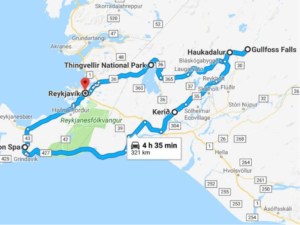
This 300-kilometer circular route from Reykjavik to Iceland’s southern hills has three of the country’s most impressive sights. At the first stop, an hour east of the city, is Thingvellir National Park, a UNESCO World Heritage Site.
In this park, there is a canyon, which was formed due to the fault of the Eurasian and North American tectonic plates. Besides, there is the Althingi, the world’s oldest parliament, founded in 930.
Also, you can enjoy a beautiful two-stage waterfall, Gullfoss, 32 meters high. Importantly, you can visit the Haukadalur valley with thermal springs and mud geysers, including the famous Strokkur geyser, which erupts every 5-10 minutes.
4. Enjoy History at the National Museum of Iceland
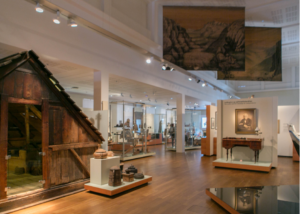
The National Museum of Iceland shows the country’s entire history, from the first Viking settlements to the present day. It was founded in 1863.
Most of all, the museum tells about the era of the settlement of Iceland and the rule of the Jarls. This display also features swords, a bronze statue of Thor (the Scandinavian god of thunder), and horn goblets.
However, the most valuable item in the museum is the door of the 13th-century Valpofstadur church. It depicts a knight fighting dragons and rescuing a lion from them, who will later become his devoted friend.
The museum is housed in a unique building and houses over 2,000 artifacts. You can also use the audio guide when visiting the exhibitions.
5. Walk around the Central District
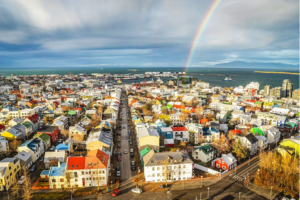
Be sure to take the time to walk around the city center. It is unlike any other metropolitan center: instead of standard souvenir shops, small private shops are selling unique goods, such as clothes made from Icelandic wool and dishes made from volcanic rock.
Enjoy a leisurely shopping spree and great restaurants serving traditional Icelandic food. On the city dam, you can breathe in the fresh ocean breeze and get acquainted with the city’s architectural monuments.
Late in the evening at the Sun Wanderer, you can see the most magical sunset in all of Iceland. For those wishing to settle close to the center, within walking distance of the main attractions and bus routes, there is the Lotus Hotel.
6. Swim in the Thermal Pools
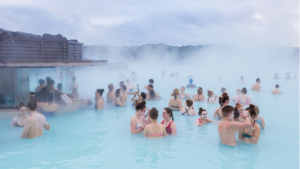
The most popular form of relaxation in Reykjavik is visiting the public thermal pools. The city has 17 pools with water from Iceland’s natural thermal springs. Locals come here to meet friends and relax their minds and bodies.
Thermal pools are an important part of Icelandic culture. They provide visitors with an opportunity to experience local customs and experience the unique health benefits of hot springs.
In order to get a complete impression of the thermal springs of Iceland, it is best to go for a whole day to the popular Blue Lagoon thermal complex.
7. Shop at Laugavegur Shopping Street
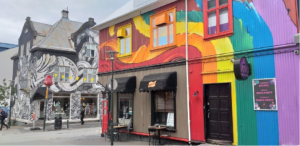
Upon arrival in Reykjavik, shopping enthusiasts should head straight to the main shopping street, Laugavegur. This is one of the oldest streets in the capital’s center. Its name means “washing road” in Icelandic, as it leads to a thermal spring where the women of Reykjavík washed their clothes in the past.
Vogue magazine called Laugavergur is a trendy street with modern branded shops surrounded by historical buildings. It’s also home to some of the city’s best restaurants and has a vibrant nightlife on Fridays and Saturdays.
Laugavegur fulfills every desire: whether it’s shopping for fashionable clothes or just having a good time.
8. Climb Mount Esja
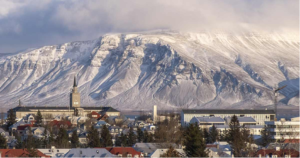
The majestic mountain near Reykjavik is the most popular destination for hikers. While climbing the main tourist route around Esja, you can enjoy the fresh mountain air of Iceland.
All trails to the top of the mountain are marked with a level of difficulty. Esja is suitable for both beginners and experienced hikers.
You can climb to the very top of the mountain, at the height of 914 meters. There, you can sign the guest book or turn back before reaching the top at a stone called Stein. The trail near Stein is considered difficult to pass, so it is only for experienced hikers and climbers.
Bottom Line
Reykjavik is a unique destination that has something to offer for everyone. From majestic natural phenomena, such as the Aurora Borealis, to cultural attractions, like the National Museum of Iceland, it is a great place to explore.
The city also offers numerous opportunities for outdoor activities, such as climbing Mount Esja or enjoying the thermal springs. Whether you come to explore or just relax and enjoy nature, Reykjavik will leave you with wonderful memories.





